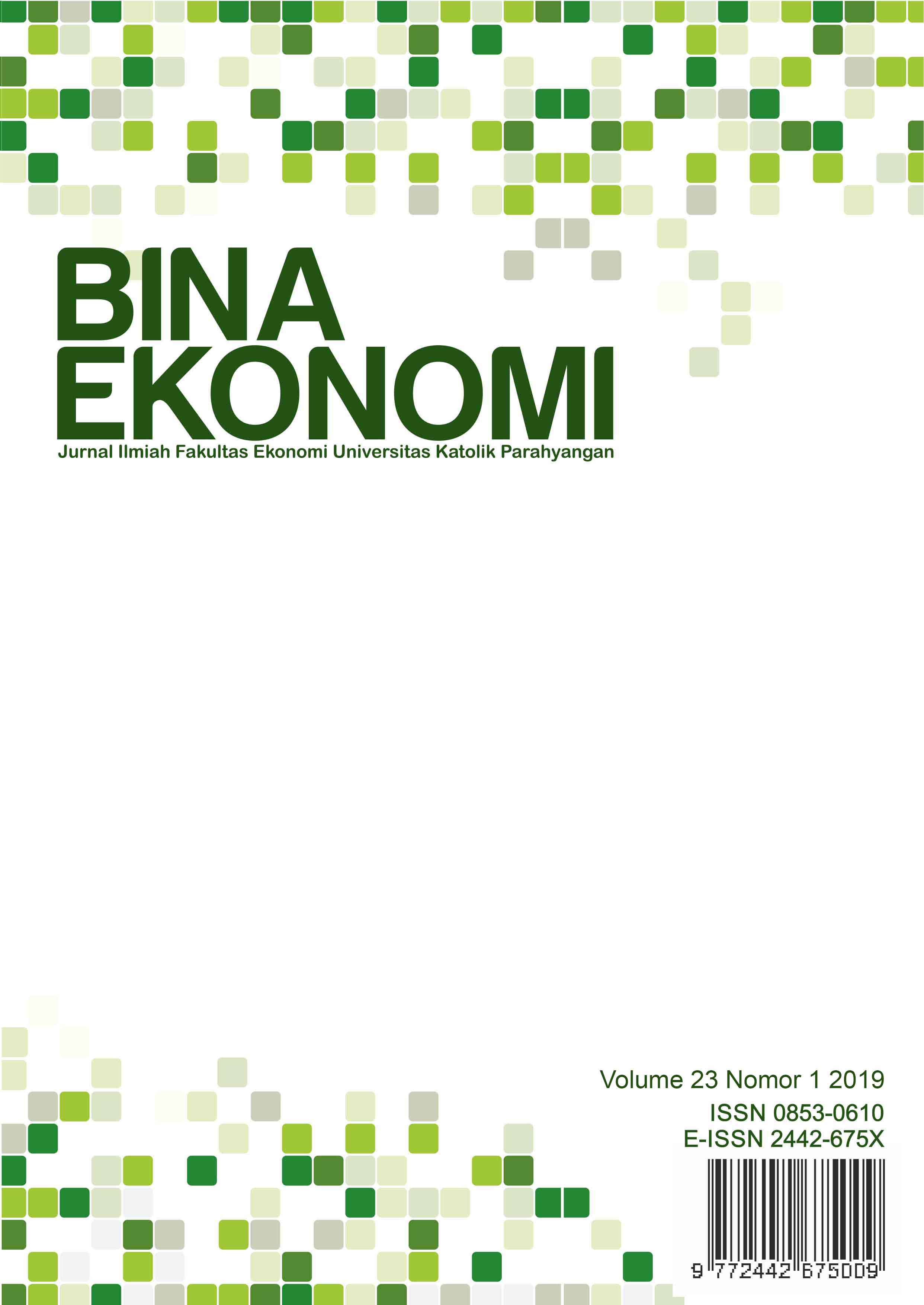FAKTOR YANG MEMPENGARUHI MATURITAS MANAJEMEN RISIKO ORGANISASI DI INDONESIA
DOI:
https://doi.org/10.26593/be.v23i1.4366.67-79Abstract
Risk management maturity (RMM) is often used as an indicator to show the effectiveness of the organization’s risk management implementation. This paper discusses the factors that affect the achievement of the level of maturity in the application of risk management in organizations. Data obtained through a survey involving 55 respondents who are practitioners of risk management and processed using contingency table analysis techniques. Based on the results of data processing, the aspects that support the maturity level of the organization’s risk management are related to a clear governance structure, guidelines and procedures, leadership’s commitment and periodic reviews, human resources who have competence in the field of risk management to create culture of risk awareness, integrated management and performance management system, as well as organizational resilience and sustainability management systems.
References
Agarwal, R., & Kallapur, S. (2018). Cognitive risk culture and advanced roles of actors in risk governance: a case study. The Journal of Risk Finance.
Agyei-Mensah, B. K., & Buertey, S. (2019). Do culture and governance structure influence extent of corporate risk disclosure?. International Journal of Managerial Finance.
Alijoyo, F. A., Hendra, R., Sirait, K. B. (2020). The State-of-The-Art of Enterprise Risk Management Maturity Models: A Review. Manuscript submitted for publication.
Chaudhuri, A., Ghadge, A., Gaudenzi, B., & Dani, S. (2020). A conceptual framework for improving effectiveness of risk management in supply networks. International Journal of Logistics Management.
Drogalas, G., Eleftheriadis, I., Pazarskis, M., & Anagnostopoulou, E. (2017). Perceptions about effective risk management: The crucial role of internal audit and management Evidence from Greece. Investment management and financial innovations, 14(4), 1-11.
Fraser, I., & Henry, W. (2007). Embedding risk management: structures and approaches. Managerial Auditing Journal.
Mensah, G., & Gottwald, W. (2015). Enterprise Risk Management: Factors Associated with Effective Implementation. https://web.actuaries.ie/sites/default/files/erm-resources/100_factors_ effective_ERM_implementation.pdf.pdf
Gupta, P. K. (2011). Risk management in Indian companies: EWRM concerns and issues. The Journal of Risk Finance.
Kabuye, F., Bugambiro, N., Akugizibwe, I., Nuwasiima, S., & Naigaga, S. (2019). The influence of tone at the top management level and internal audit quality on the effectiveness of risk management practices in the financial services sector. Cogent Business & Management, 6(1)
Karyani, E., Dewo, S. A., Santoso, W., & Frensidy, B. (2019). Risk governance and bank profitability in ASEAN-5: a comparative and empirical study. International Journal of Emerging Markets.
Kikwasi, G. J. (2018). Critical Success Factors for Effective Risk Management. In Risk Management Treatise for Engineering Practitioners. IntechOpen.
Kurniawan, R., Zailani, S. H., Iranmanesh, M., & Rajagopal, P. (2017). The effects of vulnerability mitigation strategies on supply chain effectiveness: risk culture as moderator. Supply Chain Management: An International Journal.
Lind, D. A., Marchal, W. G., & Wathen, S. A. (2012). Statistical techniques in business & economics. New York, NY: McGraw-Hill/Irwin,.
Mardessi, S. M., & Arab, S. D. B. (2018). Determinants of ERM implementation: the case of Tunisian companies. Journal of Financial Reporting and Accounting.
Newman, W., Charity, M., Faith, S., & Ongayi, W. (2018). Literature review on the effectiveness of risk management systems on financial performance in a public setting. Academy of Strategic Management Journal, 17(4), 1-12.
Oliva, F. L. (2016). A maturity model for enterprise risk management. International Journal of Production Economics, 173, 66-79.
Priyarsono, D.S., & Munawar, Yusuf. (2020). Pengembangan SDM untuk Implementasi Manajemen Risiko: Perspektif Baru dari Sudut Pandang Pengguna. Jurnal Aplikasi Bisnis dan Manajemen.
Shimpi, P. (2005). Enterprise risk management: from compliance to value; A unifying framework can help companies identify and articulate risks consistently across the enterprise and evaluate alternative capital structures to bear those risks. Financial Executive, 21(6), 52-55.
Sari, M., Lubis, A. F., Maksum, A., Lumbanraja, P., & Muda, I. (2018). The Influence of Organization's Culture and Internal Control to Corporate Governance and Its Impact on State-Owned Enterprises Corporate. Journal of Applied Economic Sciences, 13(3).
Sax, J., & Torp, S. S. (2015). Speak up! Enhancing risk performance with enterprise risk management, leadership style and employee voice. Management Decision.
Wendler, R. (2012). The maturity of maturity model research: A systematic mapping study. Information and software technology, 54(12), 1317-1339.
Yang, S., Ishtiaq, M., & Anwar, M. (2018). Enterprise risk management practices and firm performance, the mediating role of competitive advantage and the moderating role of financial literacy. Journal of Risk and Financial Management, 11(3), 35.
Yeo, K. T., & Ren, Y. (2009). Risk management capability maturity model for complex product systems (CoPS) projects. Systems Engineering, 12(4), 275-294.
Zhao, X., Hwang, B. G., & Low, S. P. (2013). Critical success factors for enterprise risk management in Chinese construction companies. Construction Management and Economics, 31(12), 1199-1214.


